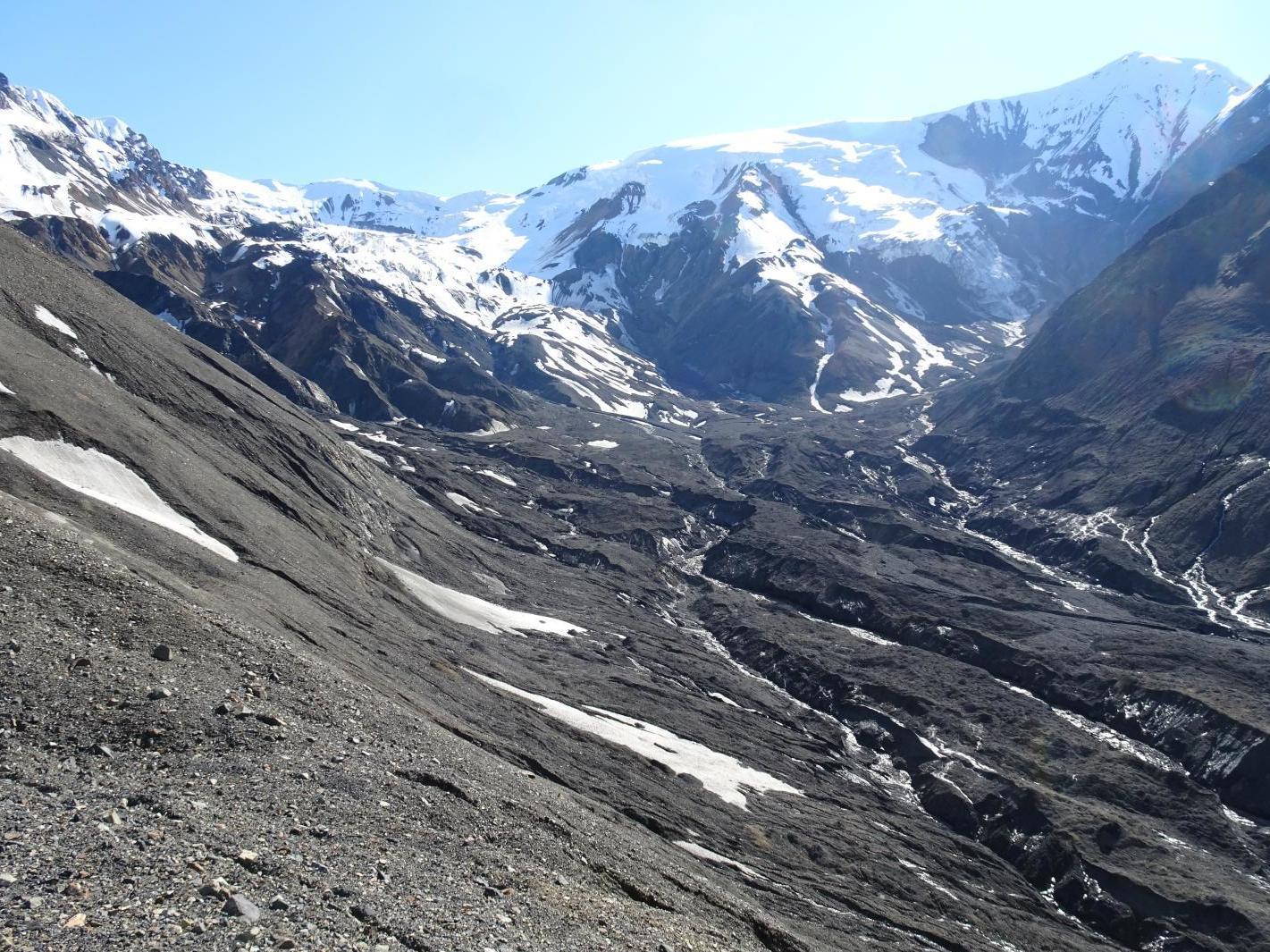Sliding glaciers ‘a new threat’ as global warming melts ice
Meltwater caused a 500-metre slab of ice to cascade down an Alaskan valley — and researchers say warmer summers are making similar events more likely

Your support helps us to tell the story
From reproductive rights to climate change to Big Tech, The Independent is on the ground when the story is developing. Whether it's investigating the financials of Elon Musk's pro-Trump PAC or producing our latest documentary, 'The A Word', which shines a light on the American women fighting for reproductive rights, we know how important it is to parse out the facts from the messaging.
At such a critical moment in US history, we need reporters on the ground. Your donation allows us to keep sending journalists to speak to both sides of the story.
The Independent is trusted by Americans across the entire political spectrum. And unlike many other quality news outlets, we choose not to lock Americans out of our reporting and analysis with paywalls. We believe quality journalism should be available to everyone, paid for by those who can afford it.
Your support makes all the difference.Global warming is increasing the risk of catastrophic glacier detachments, geologists have warned.
Meltwater generated by warmer summers is posing a new threat “that we are only just beginning to understand”, according to researchers who investigated what unleashed a torrent of ice and rock that slid for seven miles through a valley in Alaska.
The 500-metre-long slab of the Flat Creek glacier broke off suddenly in August 2013 and cascaded down a rugged mountain valley in the remote Wrangell-St. Elias National Park and Preserve.
A similar event was documented at the same location two years later by National Park Service geologist Michael Loso, who recruited researchers at the University of Colorado Boulder to investigate.
“We were aware of glacier detachments that had happened in Tibet, Russia, and Argentina, but started out thinking we were investigating a regular landslide,” said Mylene Jacquemart, a PhD student. “Then we noticed that the entire glacier was missing.”
No one was hurt in either of the ice surges in Alaska, but similar glacier detachments in less remote areas in the last two decades have been deadly.
Some 140 people were killed when masses of ice broke loose from the Kolka glacier and buried an entire village in Russia’s North Ossetia region in 2002.
In July 2016, a wall of ice and rocks from the Aru glacier gushed down a narrow valley in Tibet, killing nine herders and hundreds of sheep and yaks — and baffling scientists who were unsure what had caused the surge.
A study published by the Colorado Boulder researchers in the journal Geology found both Alaskan detachments occurred at the height of the summer melt seasons and suggests these highly destructive events could occur more frequently in a warming world.
The team began a research project to investigate what had happened at Flat Creek after preliminary research by Mr Loso ruled out a seismic trigger.
They used a variety of tools, including satellite imagery, field measurements, digital elevation models, and meltwater modelling, to piece together what happened.
“This project was a real sleuthing challenge,” said Ms Jacquemart. “And the pieces finally fell into place when we discovered the bulge on the Flat Creek glacier.”
Ten-year-old, high-resolution satellite images showed that an unusual, 70-metre-high ice bulge existed on the glacier’s tongue prior to the first detachment in 2013.
“Our data indicate that the lowermost part of the glacier tongue was very thin, stagnant, and firmly frozen to the glacier bed,” Ms Jacquemart said.
“We believe this frozen tongue did two things: it blocked ice flowing down from higher on the glacier, forcing it to bulge; and it slowed meltwater drainage, allowing the water to pool under the glacier.”
The resulting increase in water pressure under the glacier eventually caused the tongue to suddenly detach, resulting in two mass flows so large that they each buried about three square kilometres of 400-year-old forest.
The similarity of the glacier detachments in Alaska and Tibet suggest they shared a common cause, according to the researchers.
Other detachments elsewhere in the world have also been recently discovered, suggesting that large-scale glacier detachments may be exacerbated by global warming, said Ms Jacquemart.
She added: “We conclude that the meltwater produced by increasingly warmer summers has the potential to create unexpected consequences in the form of hazards that we didn’t previously know about and that we are only just beginning to understand.”
Glaciers are known to be shrinking as a result of their ice melting at a faster pace, but Ms Jacquemart said: “The new insights we’re gaining from places like Flat Creek show that we also need to consider new processes we weren’t previously aware of”.
Ultimately, she added, scientists will need to develop a better understanding of these new processes and potentially reevaluate hazard assessments in mountain communities.
The risk is not confined to the immediate vicinity of the glacier, given how far mass flows produced by detachment can travel.
Emergency planners may also need to consider knock-on impacts such as the temporary damming of a river by ice and rocks and subsequent release of water.
“Suddenly, a remote event can have far-reaching impacts downstream,” said Ms Jacquemart.
Join our commenting forum
Join thought-provoking conversations, follow other Independent readers and see their replies
Comments